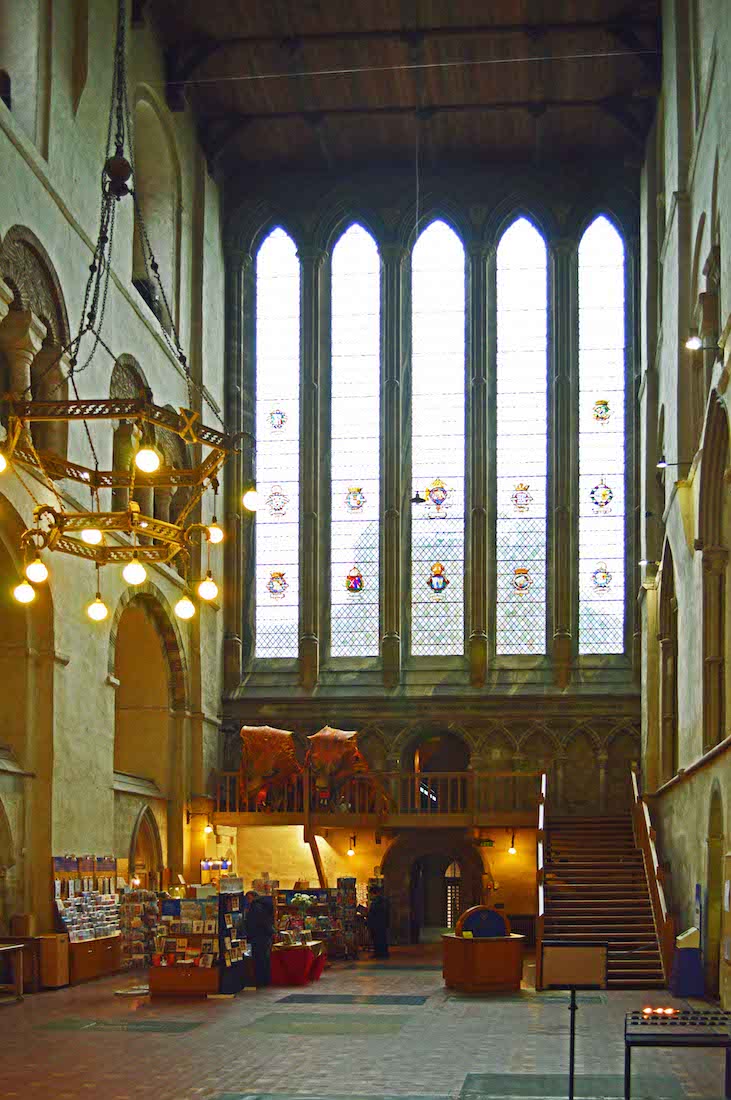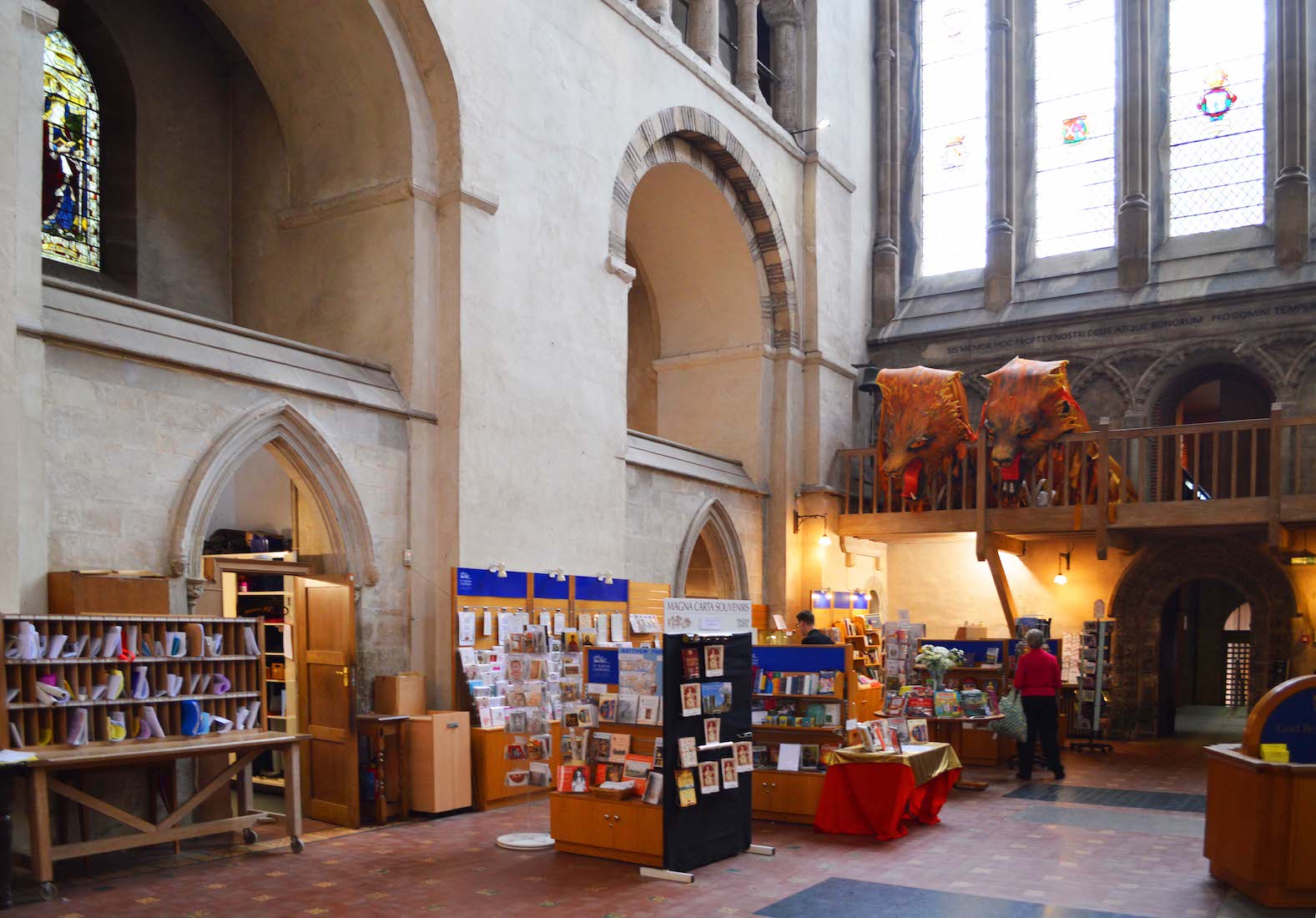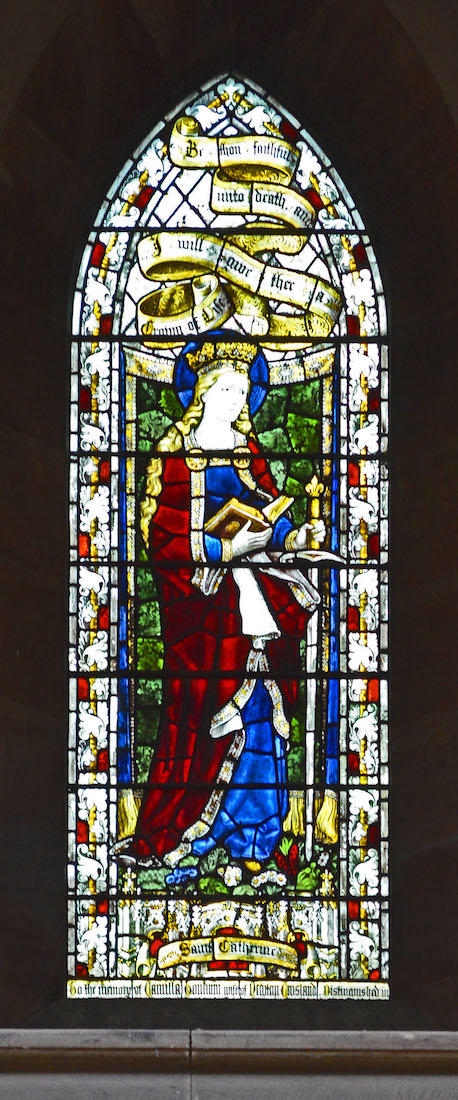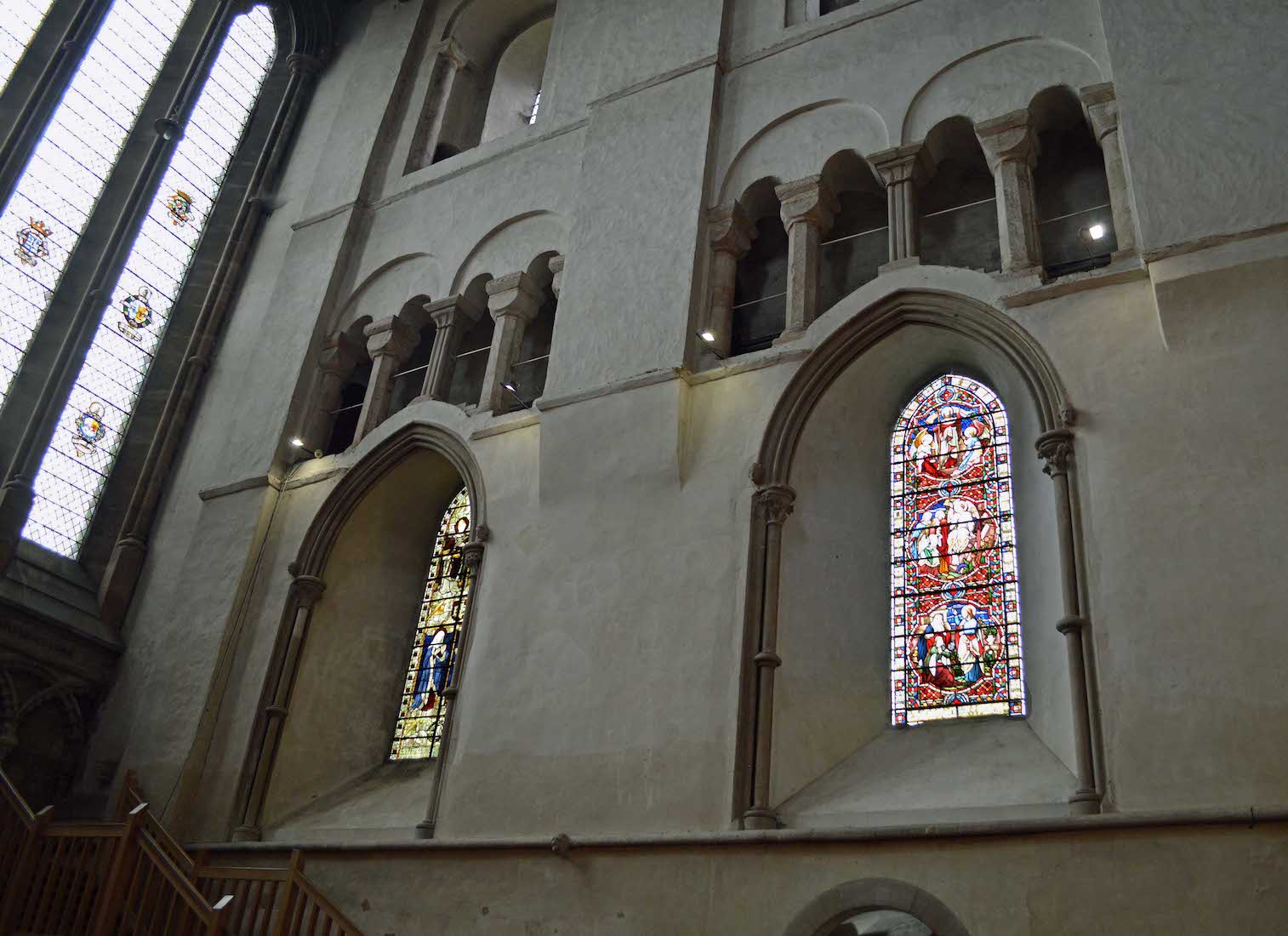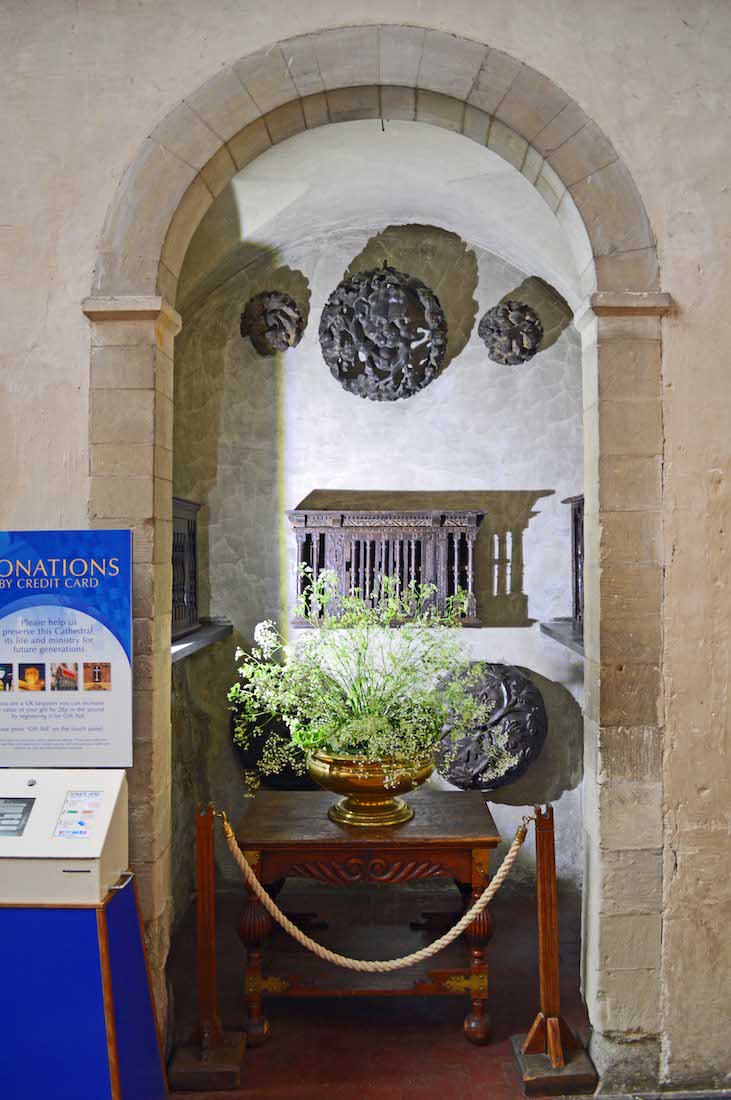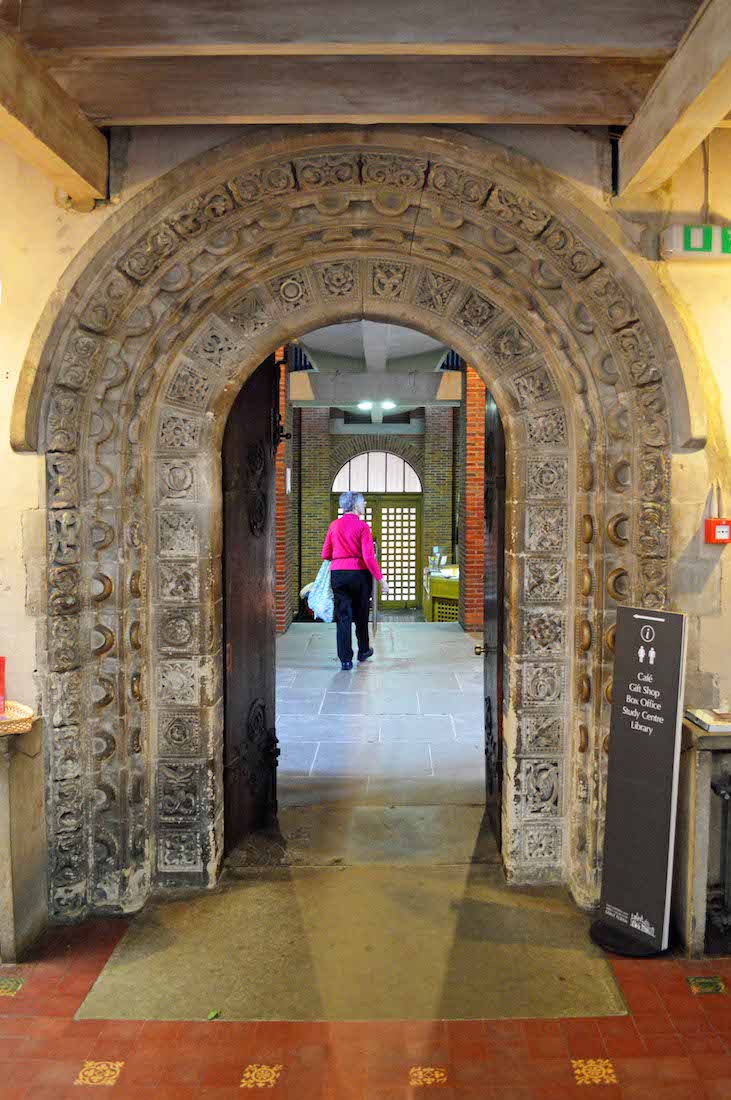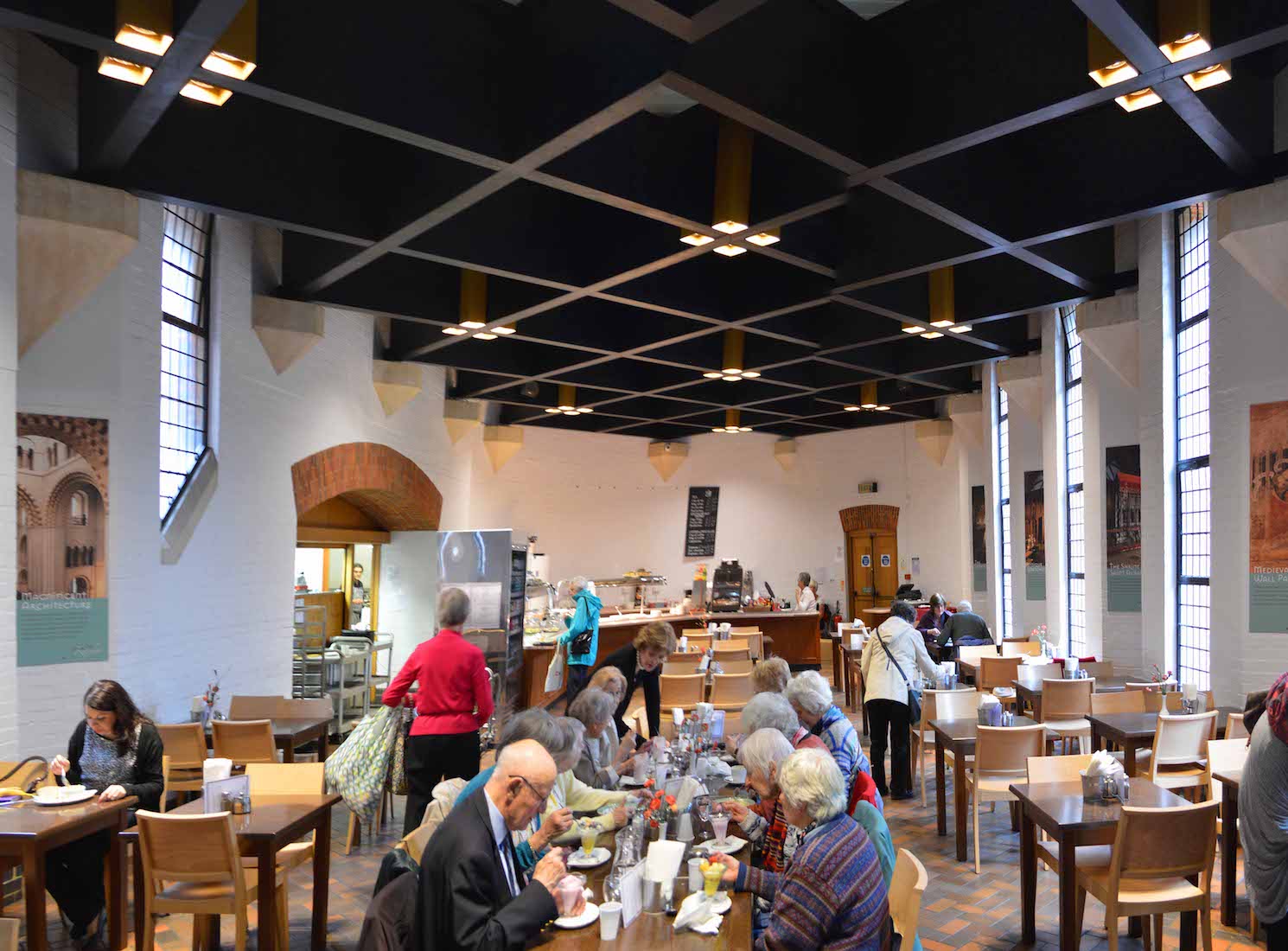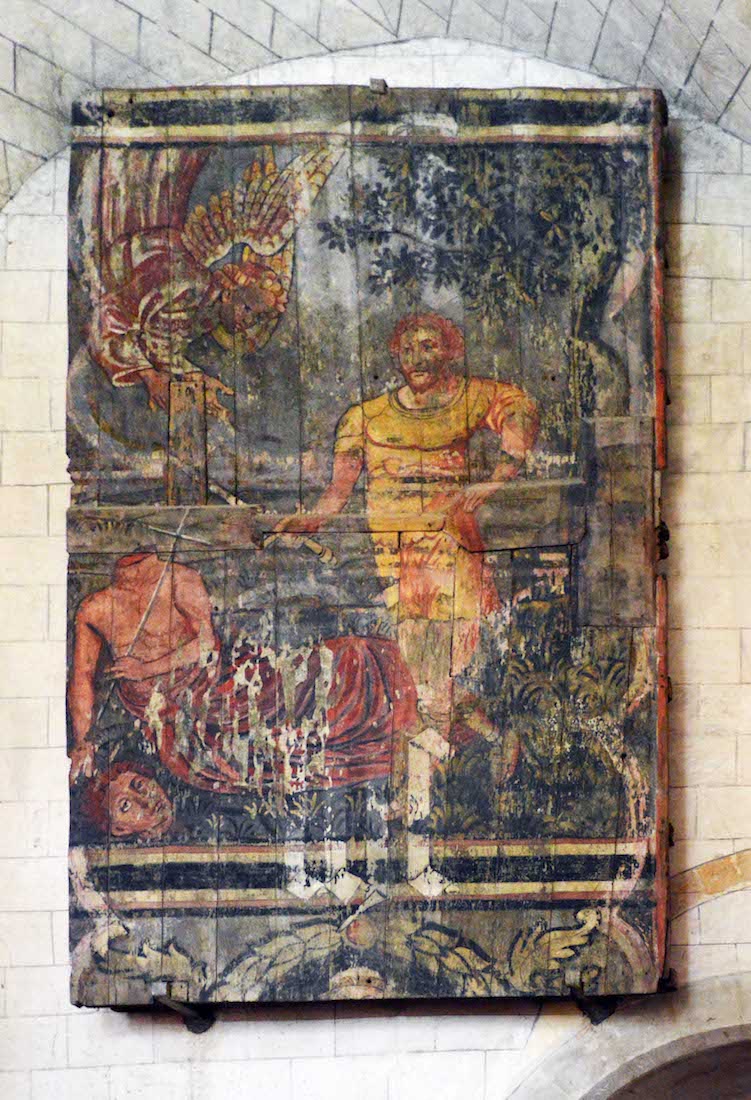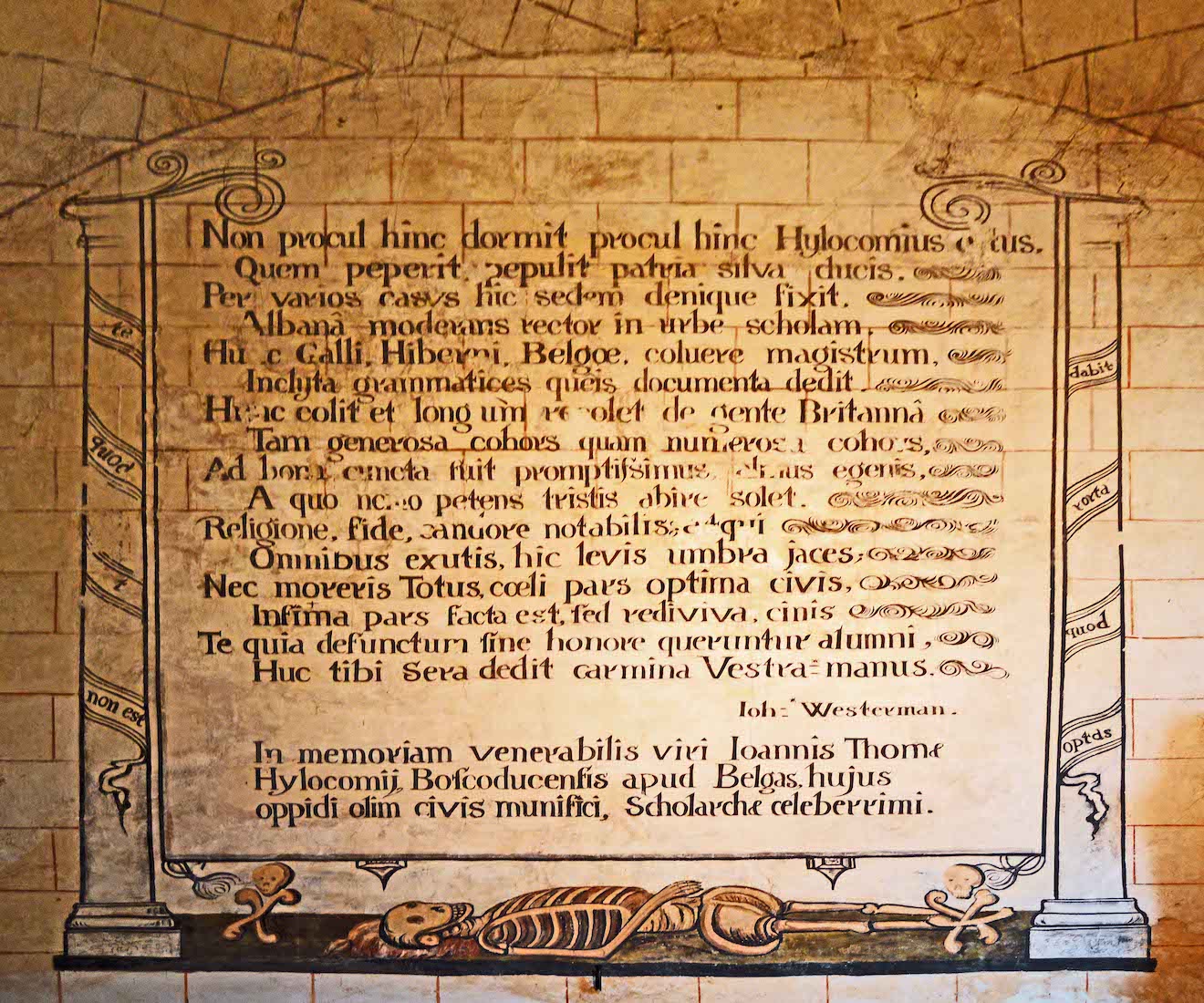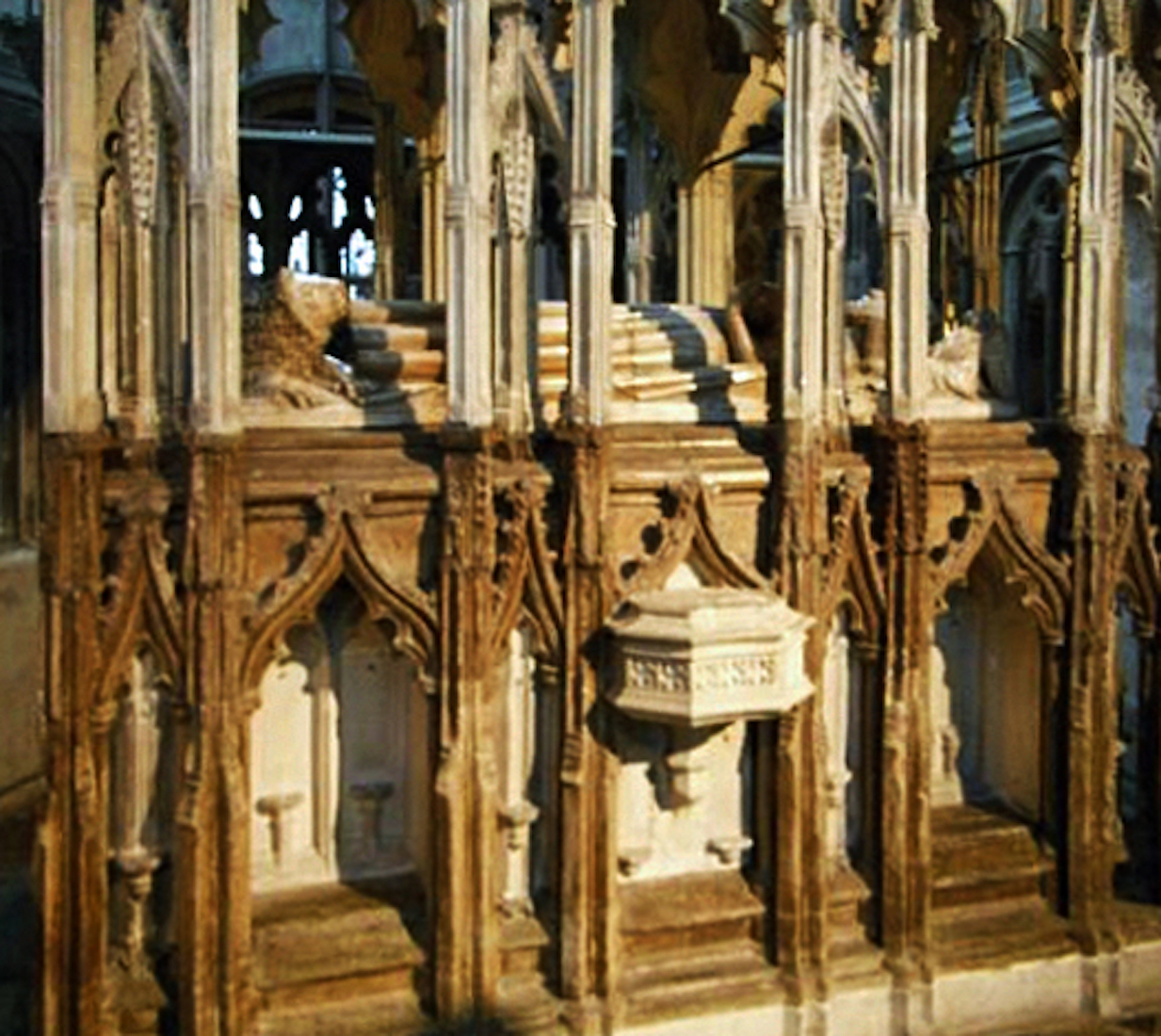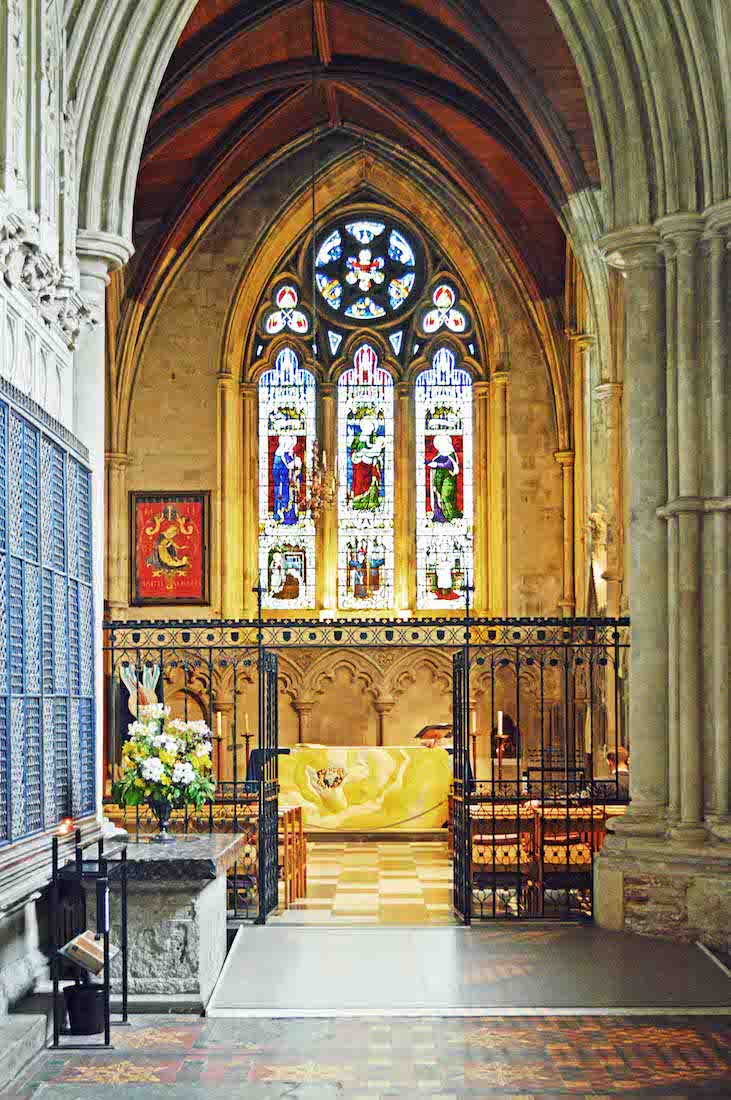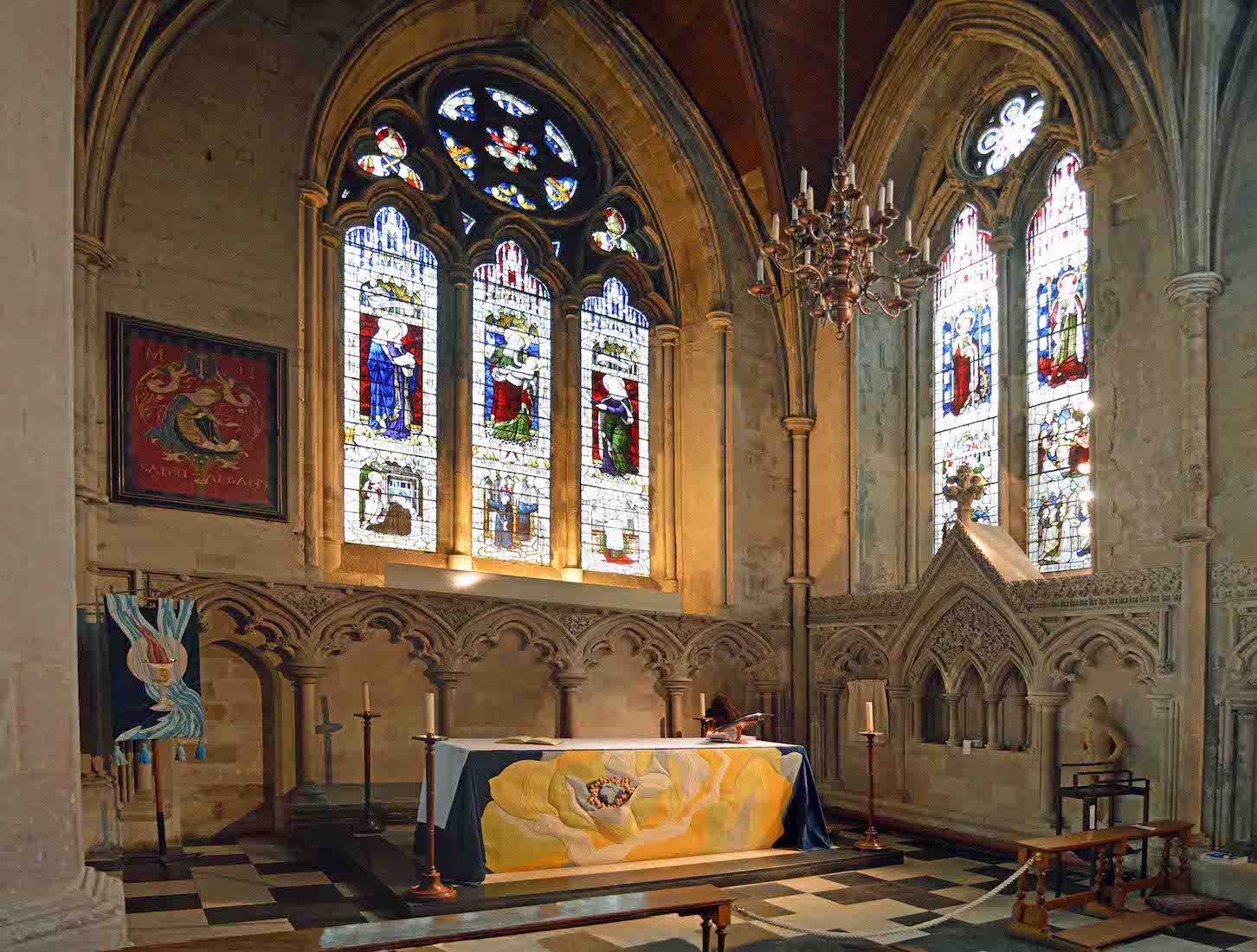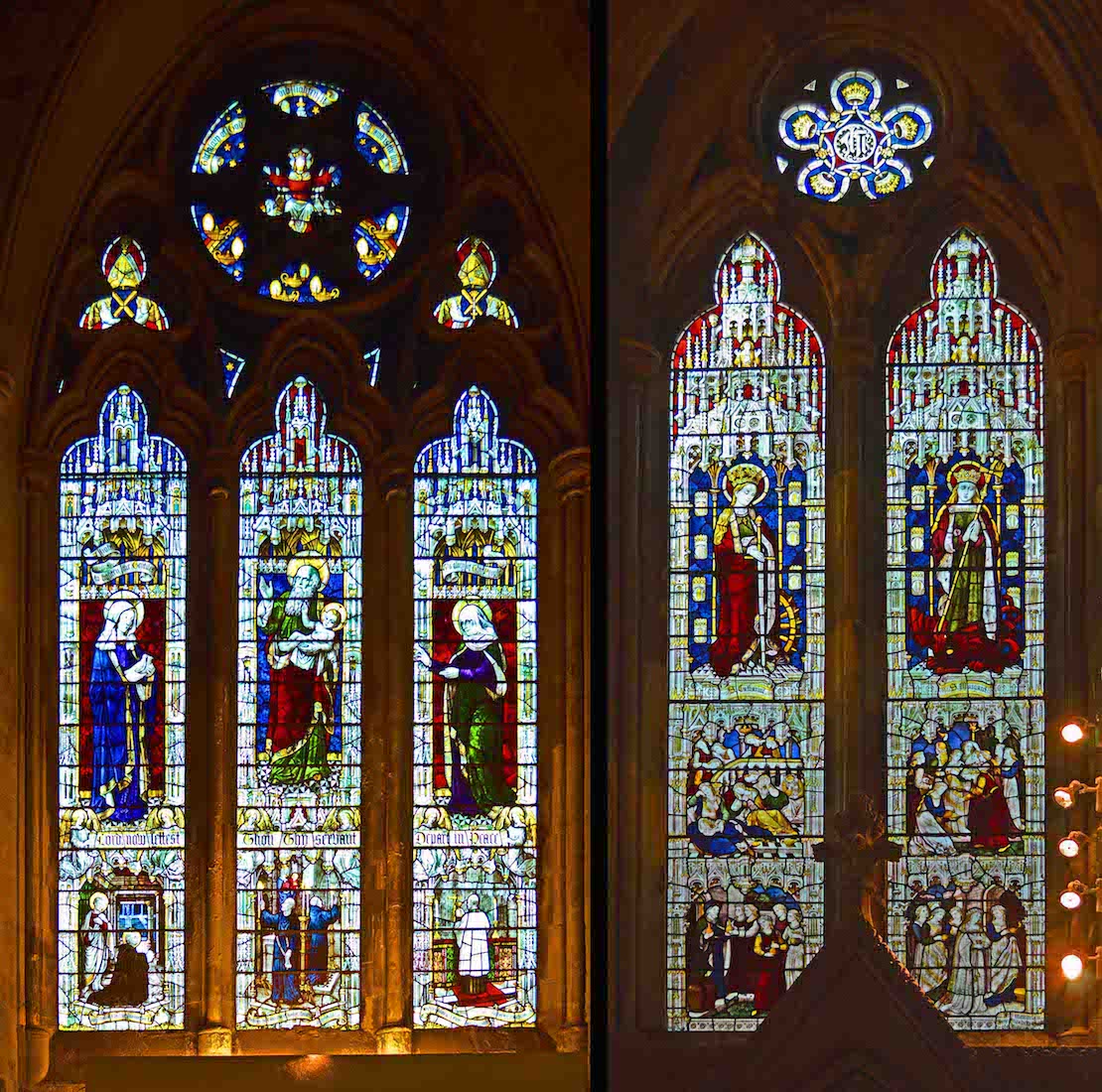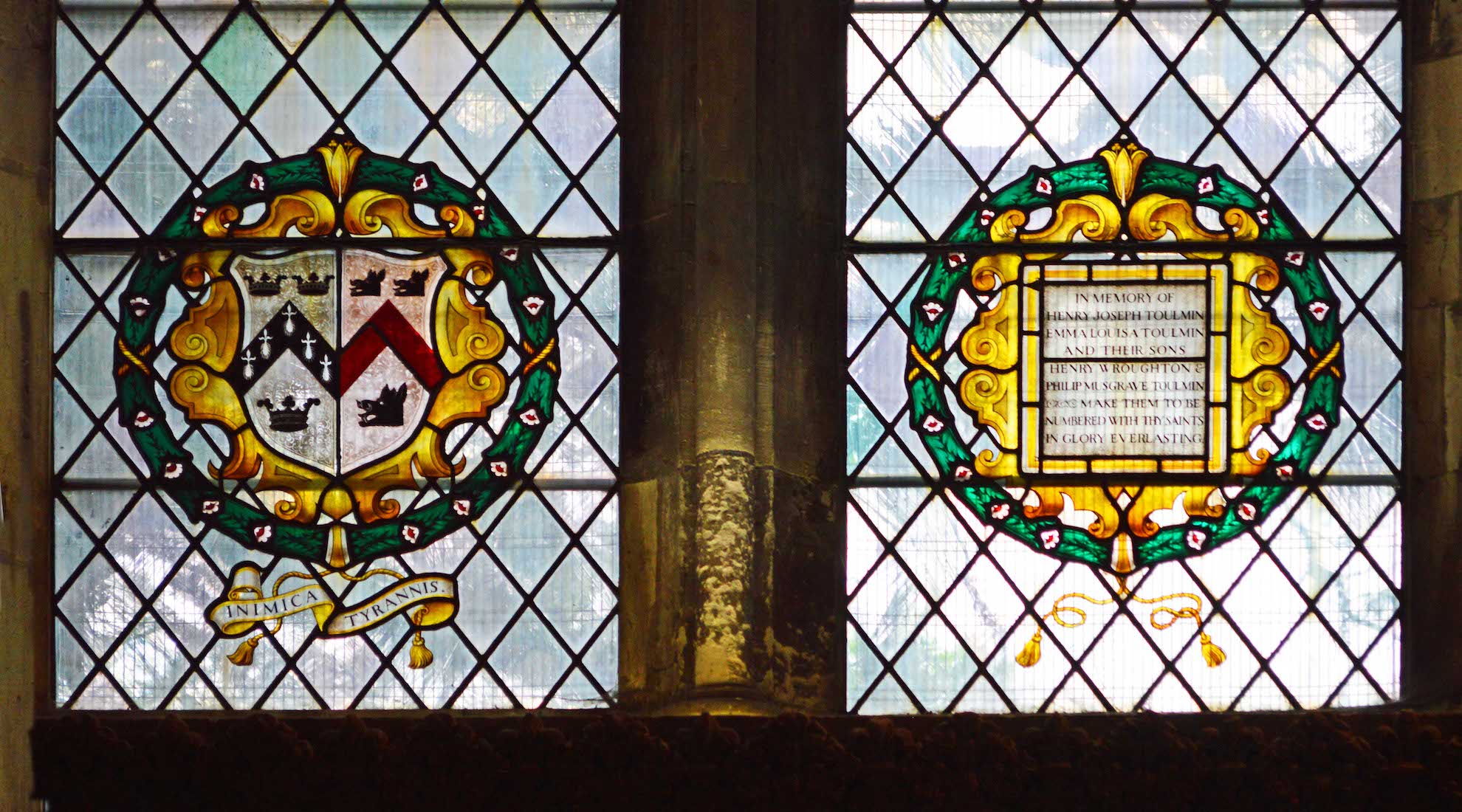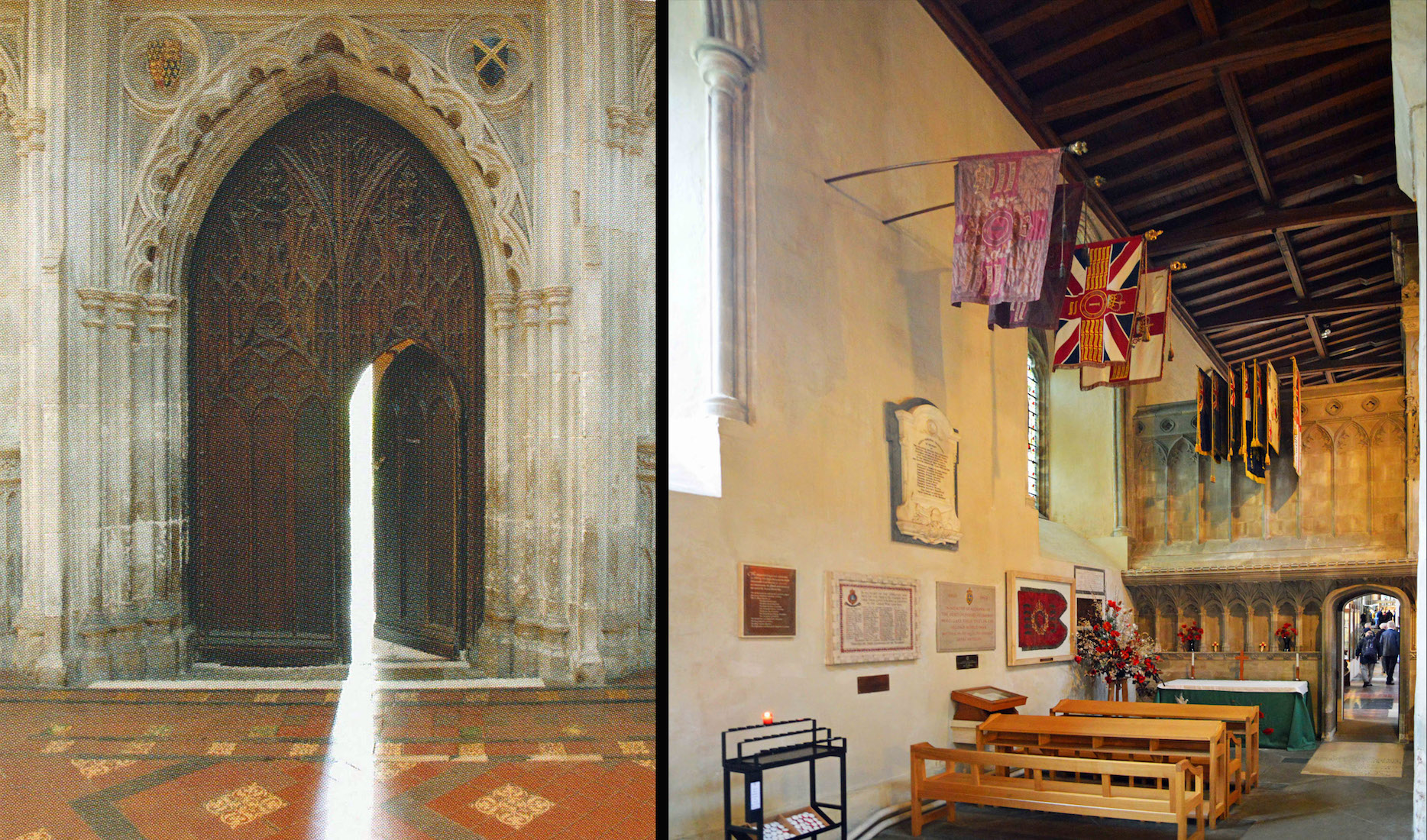
We leave the nave and walk up the South Quire aisle. Here hang the Colours of various disbanded regiments. Here too is the 14th century Abbot’s Door – one of the oldest in the Abbey. The doorway displays the earliest known shield of St Alban. [The picture at left is from a Cathedral Publication] PLAN
42. MARTYR STATUES
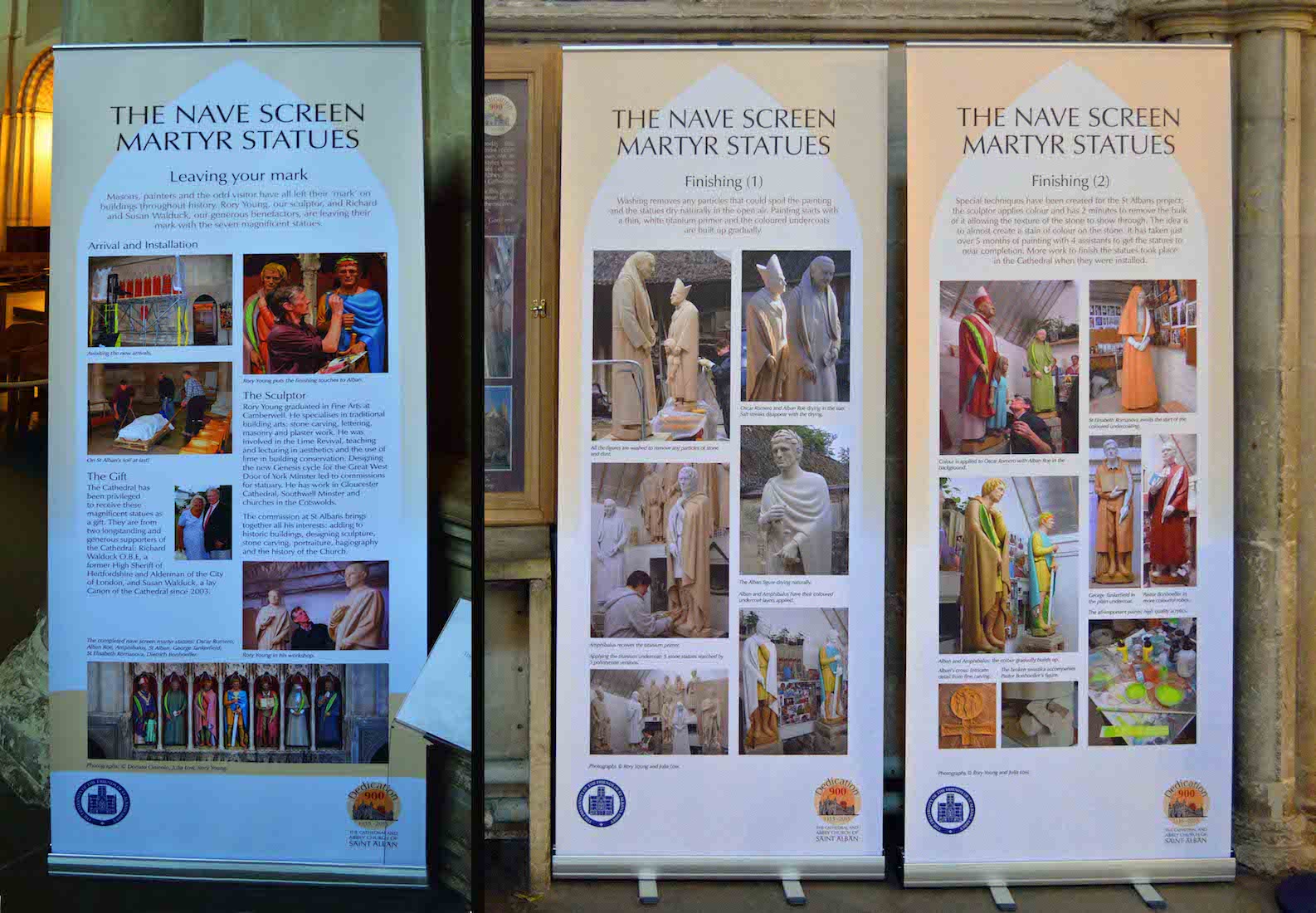
In the South Quire aisle there are several interesting posters about the making of the statues of the martyrs which have been placed in the nave screen.
43. SOUTH TRANSEPT
The Quire aisle leads us to the vast space of the South transept. This transept is predominantly Norman in style, but with later modifications, especially in the windows of the South wall which have been replaced several times. There is a (small) mystery here: the five lancets appear to be the same height, whereas from the outside they are clearly graduated.
44. BOOK SHOP
The South transept is clearly a working area of the Cathedral. The doorway at right leads through to the new Chapter House. Notice the stained glass window at left.
45. SOUTH TRANSEPT EAST WINDOW
The attractive window in the East wall shows St Catherine. Saint Catherine of Alexandria, also known as Saint Catherine of the Wheel is, according to tradition, a Christian saint and virgin, who was martyred in the early 4th century at the hands of the pagan emperor Maxentius. She is said to have been both a princess and a noted scholar, who became a Christian around the age of fourteen, and converted hundreds of people to Christianity.
46. SOUTH TRANSEPT WEST WALL
The architecture of this transept continues the three layer style of the nave, although the Norman influence with the rounded arches is more apparent here. There are two stained glass windows on this wall.
47. TRANSEPT WEST WINDOWS
The left window bears images of St Stephen and St Alban (above) and St Mary and St Elizabeth (below). The right window depicts three images: the Risen Christ, the angel appearing to the three women at the tomb, and Christ appearing to the two Marys.
48. SOUTH TRANSEPT NICHE
This niche contains several bosses and three 17th century dole cupboards, used until the 1970s for the distribution of bread to twenty poor women.
49. EXIT FROM SOUTH TRANSEPT
An impressive doorway at the end of the South transept leads to the more modern Chapter House which includes ...
50. CAFETERIA
... a cafeteria! This is a welcome find for the hungry tourist.
51. SOUTH PRESBYTERY AISLE
After a welcome coffee we return through the South transept and turn right into the South presbytery aisle. Up several steps and through the wrought iron gateway ... . Notice the edge of the wooden panel at top above the door, the reclining skeleton on the next wall, and the open door at right leading to a chantry.
52. CEILING PANEL
Above the doorway just beyond the wrought iron gates is this painted scene on wooden boards, depicting the beheading of John the Baptist. This was an original wooden ceiling panel of the Tower.
53. WALL TEXT
Just along from the ceiling panel and up high is this wall text. It contains in Latin a quotation from John Westerman, and is in memory of Joannis Thorne. I note that one John Thorn was a Benedictine monk of St Albans who was martyred. The horizontal skeleton is a nice touch!
54. TOMB OF HUMPHREY
Humphrey, the Duke of Gloucester, fought alongside his brother, Henry V, at Agincourt in 1415. He then became Protector of England for the baby Henry VI. This is the only royal tomb in the Cathedral.
55. CHANTRY DECORATION
Returning to the South presbytery aisle we notice this nice decoration on our left, marking the position of the Humphrey chantry. The Thorne text is at left.
56. SOUTH PRESBYTERY AISLE LOOKING WEST
Looking back along the presbytery aisle we can see where we have come from. Notice the colonnade on the left and the large stones set in the tiles. At right is a doorway leading through to St Alban’s shrine, but we won’t go this way: we shall visit the shrine shortly.
57. SOUTH EAST PRESBYTERY
Coming to the end of the South presbytery, we arrive at a chapel, known as the Four Tapers Chapel. There is a story that the altar originally had two candles, but a further two candles were endowed, thus leading to the name.
58. FOUR TAPERS CHAPEL
This chapel has a central altar with four candlesticks, two large stained glass windows, a banner and framed St Albans artwork at left, and a small shrine and statue of St George at right.
59. CHAPEL WINDOWS
The left window shows the presentation of Jesus at the Temple with Simeon and Anna. The window at right features St Catherine and St Margaret.
60. SOUTH WINDOW
There is one further window here with plain glass and coloured insets. The right window is in memory of Henry Joseph Toulmin, his wife Emma (Wroughton) and two sons. The left window bears the Toulmin-Wroughton coat of arms and the motto ‘Inimica Tyrannis’ which translates to ‘Hostile to Tyrants’. Henry was an important man in the St Albans area.


